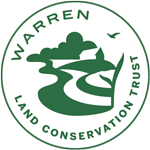Conservation easements are voluntary legal agreements between a landowner and a land trust like WLCT or government agency that permanently restrict development or certain land uses in order to protect the land’s conservation values. Common conservation values may include prime farmland soils, rich wildlife habitat, location within a watershed or along a water resource, scenic or cultural importance, historic importance, or recreation potential and public access to nature. The monetary value of a conservation easement is the difference between the land’s vale with the easement and its value without the easement.
The WLCT is not financially able to purchase such easements. However we do have experience in bringing together land owners with a government agency that has the needed resources and operates easement programs for both farm land and wetlands. Specifically we are able to arrange informational meetings with the Natural Resources Conservation Service which is part of the US Department of Agriculture. For detail as to their various programs visit the NRCS website.
The landowner continues to own the property and may sell it at any time subject to the set of restrictions called for in the easement. While these arrangements typically restrict any kind of development or subdivision within easement boundaries, farming or recreational use are typically allowed. Conservation easements do not require public access and may have outzones for structures. Each site is different depending on the conservation values to be preserved.
Additionally, conservation easements can be donated to the WLCT for tax benefits. All the conservation easements the WLCT agrees to are permanent and run with the land regardless of subsequent owners.
(The above was adapted from material on the Aquidneck Land Trust web site.)
